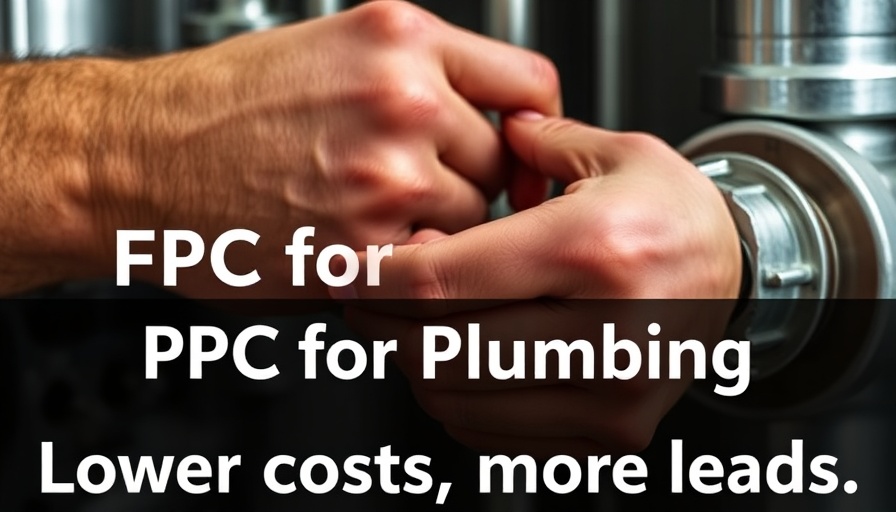
The Power of PPC Advertising for Plumbers
Pay-per-click (PPC) advertising has become a vital tool for plumbers seeking to grow their customer base and improve their online visibility. Unlike traditional marketing methods, PPC allows businesses to target specific demographics, ensuring that ads reach potential customers who are actively searching for plumbing services. This targeting results in quicker customer engagement, faster conversion rates, and ultimately a higher return on investment (ROI).
Why PPC Advertising Matters for Plumbing Businesses
PPC is particularly effective for plumbing services because it takes advantage of the immediate needs of customers. When someone Googles “emergency plumber near me,” they are often in a high-stakes situation, making them more likely to click on the first ads they see. According to statistics, businesses can expect an average return of $2 for every $1 spent on Google Ads, which makes PPC a smart investment for those in the plumbing industry.
How Much Should Plumbers Spend on PPC?
The costs associated with PPC advertising for plumbing services can vary significantly. On average, plumbers could be investing anywhere between $1,500 and $10,000 per month on ads, depending on their market and business size. Some larger entities may even exceed this range, especially if they target multiple locations. Moreover, the cost-per-click (CPC) can fluctuate from about $2 to as much as $22.30 for key queries like “plumber near me.” Knowing how to manage these costs is essential for maximizing effectiveness and ensuring profitable returns.
Steps to Optimize Your Plumbing PPC Campaign
To successfully lower the cost per lead while running PPC campaigns, plumbers should follow structured optimization strategies:
- Define Clear Goals: Whether it’s to increase service calls or enhance brand visibility, articulating clear objectives is paramount.
- Conduct Keyword Research: Employ tools like Google Keyword Planner to analyze what potential customers are searching for.
- Craft Compelling Ad Copy: Your ads should speak directly to the pain points of potential customers, showcasing your solutions and incentives.
- Utilize Geo-Targeting: Focus on your local area to ensure ads only reach customers who can realistically use your services.
- Set a Realistic Budget: Establish a spending limit for your campaigns and stick to it, adjusting based on performance.
- Regularly Optimize Ads: Monitor your campaign performance and adjust keywords, ad copy, and budget as necessary.
Innovative Tools for PPC Advertising
Besides manual adjustments, there are sophisticated tools available that simplify PPC management. Platforms like ServiceTitan and Google Ads offer comprehensive dashboards that assess performance metrics, allowing plumbers to make data-driven decisions. Incorporating features such as landing page optimizations, conversion tracking, and use of ad extensions can significantly enhance campaign effectiveness.
Common Pitfalls to Avoid
While PPC can be highly effective, there are common mistakes that plumbers should be wary of. Failing to optimize landing pages can lead to poor user experiences, driving click-through rates down. Moreover, setting unrealistic budgets or ignoring data insights can drain resources without producing measurable results. Remember, it takes time and careful analysis to fine-tune your PPC strategy for optimal performance.
Conclusion: Making the Most of PPC Advertising
PPC advertising is essential for plumbers aiming to thrive in a competitive market. With detailed strategies in place to minimize costs and maximize leads, plumbing businesses can significantly improve their customer acquisition rates. For those still uncertain about their PPC efforts, consulting with reputable digital marketing agencies can provide additional insights and streamlined strategies.
Ready to optimize your PPC strategy? Reach out to a local digital marketing agency today for tailored solutions that drive growth for your plumbing business!
 Add Row
Add Row  Add
Add 




Write A Comment